Compliance Protection

What role do data protection officers play under data protection laws ?
Data protection officers (DPOs) are crucial for ensuring compliance with data protection laws in organizations. They advise on compliance, develop policies, ensure adherence to regulations, educate stakeholders, and act as a point of contact for personal data requests.

What are the penalties for non-compliance with data protection regulations ?
Non-compliance with data protection regulations can result in significant penalties, including fines, legal action, and damage to a company's reputation. The specific penalties depend on the jurisdiction and the severity of the violation. Some common consequences include: - Fines and Financial Penalties: GDPR violations can result in fines up to €20 million or 4% of global annual turnover for less severe infringements, and up to €40 million or 8% of global annual turnover for more serious violations. CCPA violations can result in fines up to $2,500 per violation for each time a Californian resident's rights are violated, and up to $7,500 per violation if the violation involves selling or sharing personal information without consent. - Legal Action: Class action lawsuits initiated by individuals or groups may claim damages for non-compliance, with potential for large settlements depending on the number of affected parties and the severity of harm caused. Government investigations may involve possible subpoenas and audits to assess compliance levels and potential violations, as well as enforcement actions such as cease and desist orders or demands to implement corrective measures. - Reputational Damage: Loss of trust from customers when data breaches occur can erode customer faith in a company's ability to protect their information, and negative publicity from data misuse can permanently harm a company's brand image. Difficulty in partnerships and deals may arise, with other companies ending collaborations due to associated risks, and potential investors being wary of putting money into a company with known compliance issues. - Market Access Restrictions: In extreme cases, a company might be prohibited from handling certain types of data, and some regions might restrict entry to companies that have a history of non-compliance. - Corrective Measures and Costs: Technical and organizational changes may be required, such as upgrading systems to ensure compliance with technical standards like encryption and security protocols, and employee training to improve understanding of data protection laws and best practices. Legal fees for representation in legal proceedings or during investigations, and settlement payments to resolve class action lawsuits or government enforcement actions, may also be necessary. It is crucial for organizations to prioritize data protection compliance as part of their business strategy to avoid these adverse effects.

What is the General Data Protection Regulation (GDPR) ?
The General Data Protection Regulation (GDPR) is a comprehensive data privacy law that governs how personal information is collected, processed, and stored by organizations within the European Union (EU). It was designed to protect the rights of individuals and ensure their personal data is handled securely and transparently. Key features of GDPR include data minimization, consent, transparency, data portability, right to erasure, data protection officers (DPOs), and penalties for non-compliance. Benefits of GDPR compliance include enhanced trust between organizations and customers, risk mitigation through strong data protection measures, competitive advantage in the EU market, and increasing global relevance as other countries adopt similar laws. Challenges of GDPR compliance include complexity, cost, cultural differences leading to confusion and potential non-compliance, and technological limitations. In conclusion, the General Data Protection Regulation (GDPR) is a crucial piece of legislation that aims to protect the privacy rights of individuals within the European Union. While it presents both benefits and challenges for organizations, compliance with GDPR has become an essential aspect of modern business operations in today's digital age.

What challenges do ecological protection areas face in terms of enforcement and compliance ?
生态保护区在执行和合规方面面临的挑战包括资源不足、法律框架不健全、社区抵抗和文化差异。解决这些问题需要增加资金投入、加强立法、促进与当地社区的互动和跨文化理解,以保护自然生态系统并确保其长期可持续性。

How does risk management relate to compliance and regulatory requirements ?
Risk management and compliance are interconnected aspects of organizational operations, aimed at safeguarding against potential losses and legal issues. Risk management identifies and prioritizes risks impacting objectives, while compliance ensures adherence to laws and regulations. An integrated approach enhances efficiency, and collaboration between departments is key for success. Regulatory requirements significantly influence risk management and compliance strategies, with direct rules and indirect environmental changes. Understanding these dynamics is vital for maintaining reputation and avoiding compliance breaches.

What are the key principles of data protection legislation ?
Data protection legislation is designed to ensure that personal information is processed in a fair, transparent, and secure manner. The key principles of data protection legislation include: 1. Fairness, which involves transparency, purpose limitation, and data minimization. 2. Lawfulness and transparency, which require explicit consent and clear information about data processing. 3. Purpose limitation, which requires that data be collected for specific purposes and not further processed incompatibly. 4. Data minimization, which requires collecting only necessary data and retaining it only as long as necessary. 5. Accuracy, which requires keeping data up-to-date and correcting inaccuracies promptly. 6. Storage limitation, which requires not keeping data longer than necessary and storing it securely. 7. Integrity and confidentiality, which require appropriate security measures and ensuring confidentiality and privacy. 8. Accountability, which requires data controllers to ensure compliance with data protection principles and document their activities. By following these principles, organizations can protect individuals' privacy and build trust with their customers while complying with legal requirements.
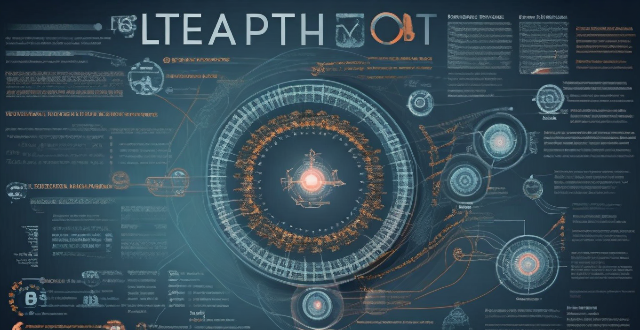
How do data protection regulations apply to artificial intelligence and machine learning ?
The article discusses the relationship between data protection regulations and artificial intelligence (AI) and machine learning (ML). It highlights that these technologies require large amounts of personal data, which raises concerns about privacy and security. The article outlines key considerations for ensuring compliance with data protection regulations, such as transparency, accountability, automated decision-making, and data minimization. It also provides best practices for organizations to implement AI/ML systems while maintaining compliance with data protection laws.
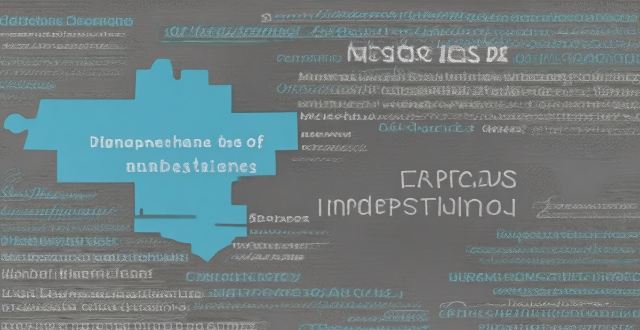
What is the importance of understanding material safety data sheets (MSDS) in chemical handling and protection ?
The text discusses the importance of understanding Material Safety Data Sheets (MSDS) in chemical handling and protection. It explains what an MSDS is, its significance for health and safety, compliance with regulations, environmental protection, and risk management. The article emphasizes that understanding MSDS is crucial for workers and employers to ensure a safe and healthy work environment.
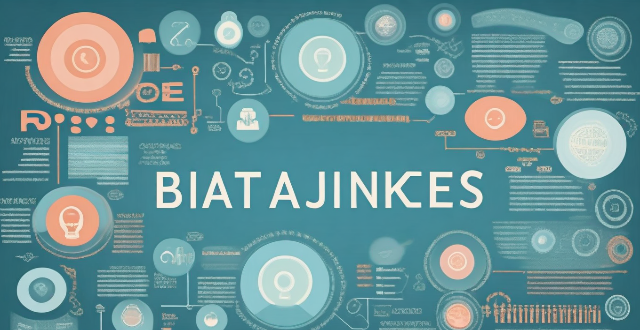
What is the difference between data privacy and data protection ?
The text discusses the difference between data privacy and data protection, emphasizing that understanding these concepts is crucial for managing personal information responsibly. Data privacy focuses on individual rights to control personal information, while data protection emphasizes organizational measures to safeguard that information. Both are essential for building trust and ensuring responsible data handling.

Can you explain the concept of 'data minimization' in data protection laws ?
Data minimization is a crucial principle in data protection laws that requires organizations to collect and process only the minimum amount of personal data necessary for specified, explicit, and legitimate purposes. This concept aims to protect individuals' privacy by limiting the potential harm that can result from the misuse or breach of their personal information. Key aspects of data minimization include collection limitation, purpose specification, data retention, data security, and accountability and transparency. Implementing robust security measures is crucial to ensure the confidentiality, integrity, and availability of personal data. Adhering to data minimization principles helps organizations comply with various data protection laws, fosters trust between individuals and organizations, reduces the risk of privacy breaches and violations, mitigates potential damage caused by cyberattacks or data breaches, and leads to cost savings for organizations due to reduced storage requirements and associated management costs.

What are the most effective ways to measure compliance with building energy efficiency standards ?
The topic summary for the text is "Measuring Compliance with Building Energy Efficiency Standards". The text discusses various methods used to assess a building's energy efficiency, including energy audits, building performance monitoring, third-party verification, benchmarking, energy efficiency ratings, and regulatory compliance checklists. Each method has its own advantages and can be used in combination to ensure that buildings meet minimum requirements for energy efficiency and contribute to reducing their environmental impact.

How are international climate agreements enforced, and what are the consequences of non-compliance ?
Enforcement of international climate agreements is crucial for mitigating the effects of climate change. The enforcement relies on mechanisms such as monitoring and reporting, peer review, financial incentives, and consequences of non-compliance. Countries are required to report their greenhouse gas emissions and progress towards meeting their commitments, which are reviewed by other countries and experts. Peer review helps identify any issues or discrepancies in the reported data and promotes transparency and accountability. Financial incentives, such as access to funding for climate action projects, can encourage compliance. Non-compliance can have significant consequences, including loss of credibility, economic impacts, legal actions, loss of funding, and reputational damage. Enforcement mechanisms rely heavily on voluntary compliance and cooperation between nations.

How can we ensure compliance with environmental legislation ?
Ensuring compliance with environmental legislation is crucial for protecting the planet and its inhabitants, and can be achieved through education and training of stakeholders, developing and implementing policies, monitoring and reporting performance, and collaborating with stakeholders.
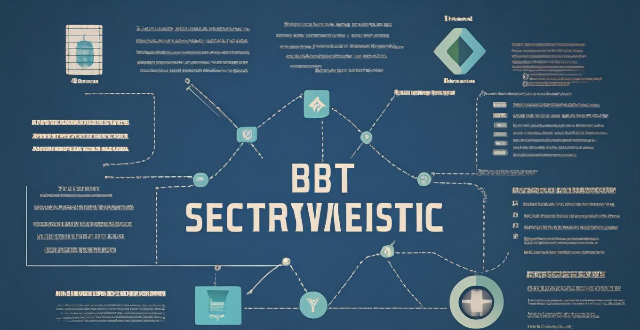
What are the best tools and technologies for network security protection ?
This article discusses some of the best tools and technologies for network security protection. The list includes firewalls, intrusion detection systems (IDS) and intrusion prevention systems (IPS), virtual private networks (VPNs), antivirus and anti-malware software, next-generation firewalls (NGFWs), network access control (NAC), and security information and event management (SIEM). These tools and technologies can help organizations protect their networks from unauthorized access, data breaches, and other cyber threats. However, it's essential to remember that no single tool or technology can provide complete protection on its own. A layered approach combining multiple solutions is often the most effective way to safeguard your network against today's complex threats.

What are the legal implications of managing digital identities ?
Managing digital identities raises various legal implications including privacy laws, intellectual property rights, liability for misuse or breach, and compliance with industry standards. To ensure compliance, organizations must implement technical and organizational measures to safeguard personal information, obtain necessary permissions for proprietary information, mitigate liability risks through robust security policies, and adhere to identity management best practices.

How does GDPR affect international businesses ?
The General Data Protection Regulation (GDPR) has significant implications for international businesses, affecting everything from data collection and processing to customer communication. Key aspects include its territorial scope, consent requirements, appointment of Data Protection Officers (DPOs), Data Subject Access Rights (DSAR), cross-border data transfers, and potential fines and penalties for non-compliance. Companies must take proactive steps to ensure compliance with GDPR to avoid costly fines and penalties while building trust with customers and partners.

What role do personal protective equipment (PPE) play in maintaining biosafety ?
PPE is vital for maintaining biosafety by preventing exposure to harmful biological agents, reducing contamination, complying with regulations, and promoting safety awareness. Types of PPE include physical barriers like gloves and gowns, eye and face protection, respiratory protection, and head protection. Best practices involve ensuring proper fit, following correct donning and doffing procedures, replacing damaged or contaminated PPE, storing it properly, and regularly inspecting it for wear or damage.

What are the best iPhone cases for protection ?
The best iPhone cases for protection include the OtterBox Defender Series, Spigen Tough Armor, UAG Monarch, Speck Presidio2 Pro, Case-Mate Tough Groove, and Incipio Duo. These cases offer features such as durability, drop protection, slim design, military-grade protection, grip, scratch resistance, Microban antimicrobial technology, dual-layer design, impact absorption, two-tone design, and precision fit. Consider these factors when selecting an iPhone case to ensure optimal protection for your device.

How do hazmat suits provide protection against chemical exposure ?
Hazmat suits, also known as chemical protective clothing or chemical resistant suits, are specialized garments designed to protect wearers from hazardous materials. These suits offer a high level of protection against chemical exposure by creating a barrier between the wearer and the environment. The key features of hazmat suits include their material, design, breathability, and comfort. The article discusses how hazmat suits provide protection against chemical exposure in detail, including the levels of protection offered by different types of suits.

Do clear iPhone cases provide as much protection as opaque ones ?
Clear and opaque iPhone cases both offer protection but differ in durability, drop resistance, and design. Clear cases showcase the phone's design but may scratch more easily, while opaque cases often provide better impact absorption and come in various colors and textures. Materials like polycarbonate, TPU, silicone, rubber, plastic, and metal contribute to the protective qualities of each type. The choice between clear and opaque cases depends on personal preference and desired level of protection.

How does encryption contribute to network security protection ?
Encryption is pivotal for network security, offering robust defense against unauthorized data access and cyber threats. It transforms readable plaintext into ciphertext using sophisticated algorithms, protecting data at rest, in transit, or being processed. Encryption's economic impact is significant, with organizations leveraging it reducing financial impact of data breaches by over USD 220,000. The global encryption software market is projected to hit USD 20.1 billion by 2025. Regulatory compliance and standards are increasingly requiring encryption for data privacy and security. Its historical significance dates back to ancient civilizations, evolving from wartime secrecy to everyday data protection. Network security objectives include preventing unauthorized access, detecting and interrupting cyberattacks, and ensuring authorized user access. Data breaches have costly consequences, with the global average cost standing at USD 4.45 million per incident. A defense in depth approach involves layering multiple security controls between attackers and potential vulnerabilities. In conclusion, encryption is an indispensable component of network security protection, offering a robust defense against unauthorized data access and cyber threats. Its ability to transform plaintext into ciphertext, compliance with regulatory standards, and evolving sophistication through AI illustrate its dynamic role in safeguarding digital communications. For individuals and organizations alike, investing in encryption is not just a recommendation but a necessity for safeguarding against the ever-growing landscape of cyber threats.

What measures should be taken to ensure compliance with biosafety policies in laboratories and research facilities ?
Ensuring biosafety compliance in laboratories and research facilities is crucial for the protection of personnel, the environment, and research subjects. Measures such as regular training sessions, competency assessments, clear policies and procedures, proper use of personal protective equipment (PPE), effective waste management, and well-developed emergency response plans should be implemented to create a safe working environment.

How do data protection regulations impact the use of cookies on websites ?
Data protection regulations have significant impacts on the use of cookies on websites. Website owners must comply with strict rules regarding explicit consent from users, transparency and disclosure of cookie use, minimization of data collection, data security, and avoidance of penalties for non-compliance. By doing so, they can protect user privacy and build trust while still providing an optimal user experience through the use of cookies.
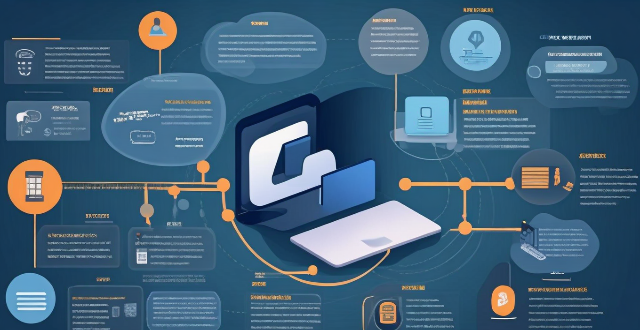
How do data protection regulations apply to social media platforms ?
This article discusses the crucial role of data protection regulations in safeguarding user information on social media platforms. It outlines key principles such as transparency, purpose limitation, and accountability that guide the handling of personal data by these platforms. The responsibilities of both social media platforms and users are highlighted, emphasizing the importance of informed consent, security measures, and user control. The article concludes by stressing the mutual responsibility of platforms and users in promoting a safe online environment through adherence to data protection regulations.
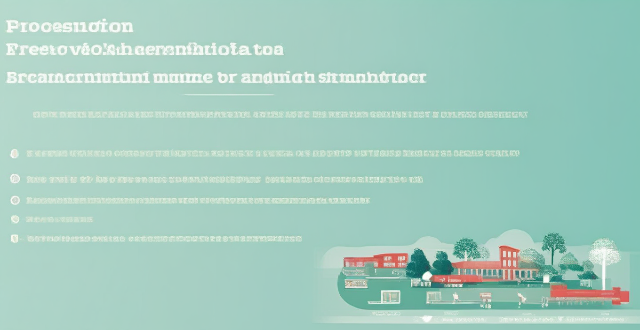
How can ecological protection areas contribute to environmental education and awareness ?
Ecological protection areas are crucial for both biodiversity conservation and environmental education. These areas offer hands-on learning experiences, interactive programs, sustainable practice promotion, community outreach, research efforts, and media publicity to raise awareness about the importance of preserving ecosystems. Through these initiatives, ecological protection areas can inspire individuals to adopt eco-friendly habits and contribute to global conservation efforts.

Can ecological protection areas help mitigate the impacts of climate change ?
Ecological protection areas can mitigate climate change impacts by carbon sequestration, habitat preservation, water conservation, soil erosion control, and nutrient cycling. These areas safeguard biodiversity, protect natural resources, and preserve ecosystem functions. They help reduce atmospheric CO2 levels, provide refuge for species adapting to changing environmental conditions, maintain stable water levels, filter pollutants from water sources, control soil erosion, and promote nutrient cycling processes. Supporting and expanding ecological protection areas is crucial for a sustainable future.

What is the role of personal protective equipment (PPE) in ensuring construction site safety ?
The article discusses the crucial role of Personal Protective Equipment (PPE) in ensuring safety on construction sites. It emphasizes the importance of PPE in protecting workers from physical, chemical, biological, and environmental hazards. The article also highlights the legal implications of not using PPE, as well as its potential to enhance worker productivity. Furthermore, it outlines various types of PPE used on construction sites, such as head protection, eye and face protection, hearing protection, hand protection, foot protection, respiratory protection, and fall protection. The article also provides best practices for using PPE effectively, including proper fit and comfort, maintenance and replacement, training and awareness, and storage and accessibility. Finally, the article concludes that PPE is an essential component of any construction project's health and safety protocols.

What are the rules regarding data breaches under data protection regulations ?
Data protection regulations have been established to ensure the confidentiality, integrity, and availability of personal data. These regulations set out specific rules regarding data breaches that must be followed by organizations that handle personal data. The key rules regarding data breaches under data protection regulations include notification of data breaches, mitigating their impact, record-keeping and reporting, penalties for non-compliance, and best practices for preventing data breaches. By adhering to these rules and implementing best practices, organizations can reduce the risk of data breaches and protect individuals' personal data.
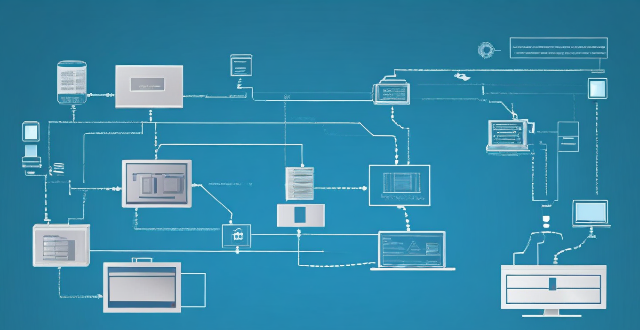
What is the role of firewalls in network security protection ?
Firewalls are crucial for network security protection, acting as a barrier between trusted and untrusted networks to prevent unauthorized access and block malicious traffic. They monitor network activity for potential threats, with various types including packet-filtering, stateful inspection, application-level, and next-generation firewalls. Firewalls offer benefits such as access control, threat prevention, visibility and auditing, and compliance enforcement. Best practices for deploying firewalls include implementing a multi-layered defense strategy, regularly updating firewall rules and policies, monitoring logs and alerts, conducting regular penetration testing, and training staff on firewall management and maintenance.

How should we prioritize the protection of endangered species and ecosystems ?
The protection of endangered species and ecosystems is a critical issue that requires immediate attention. Here are some strategies we can employ to prioritize their protection: 1. Conduct comprehensive surveys and studies to identify and understand the current state of endangered species and ecosystems. 2. Develop effective legislation and policies, such as establishing protected areas, regulating hunting and fishing, and promoting sustainable development. 3. Raise public awareness and involvement through education programs, community involvement, and media campaigns. 4. Collaborate internationally by signing international agreements, sharing knowledge and resources, and coordinating conservation efforts. By taking these steps, we can work towards ensuring the survival of our planet's diverse flora and fauna for future generations.